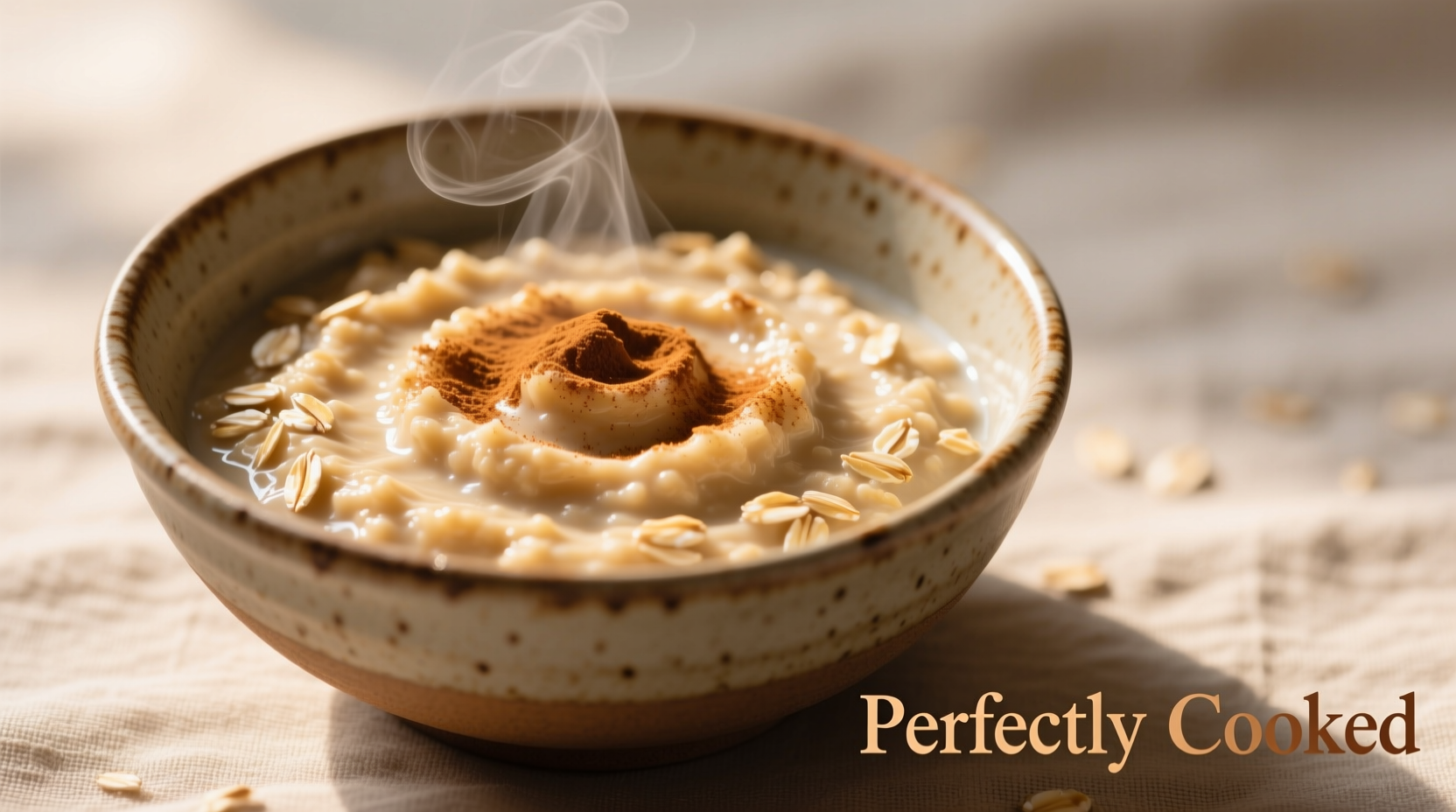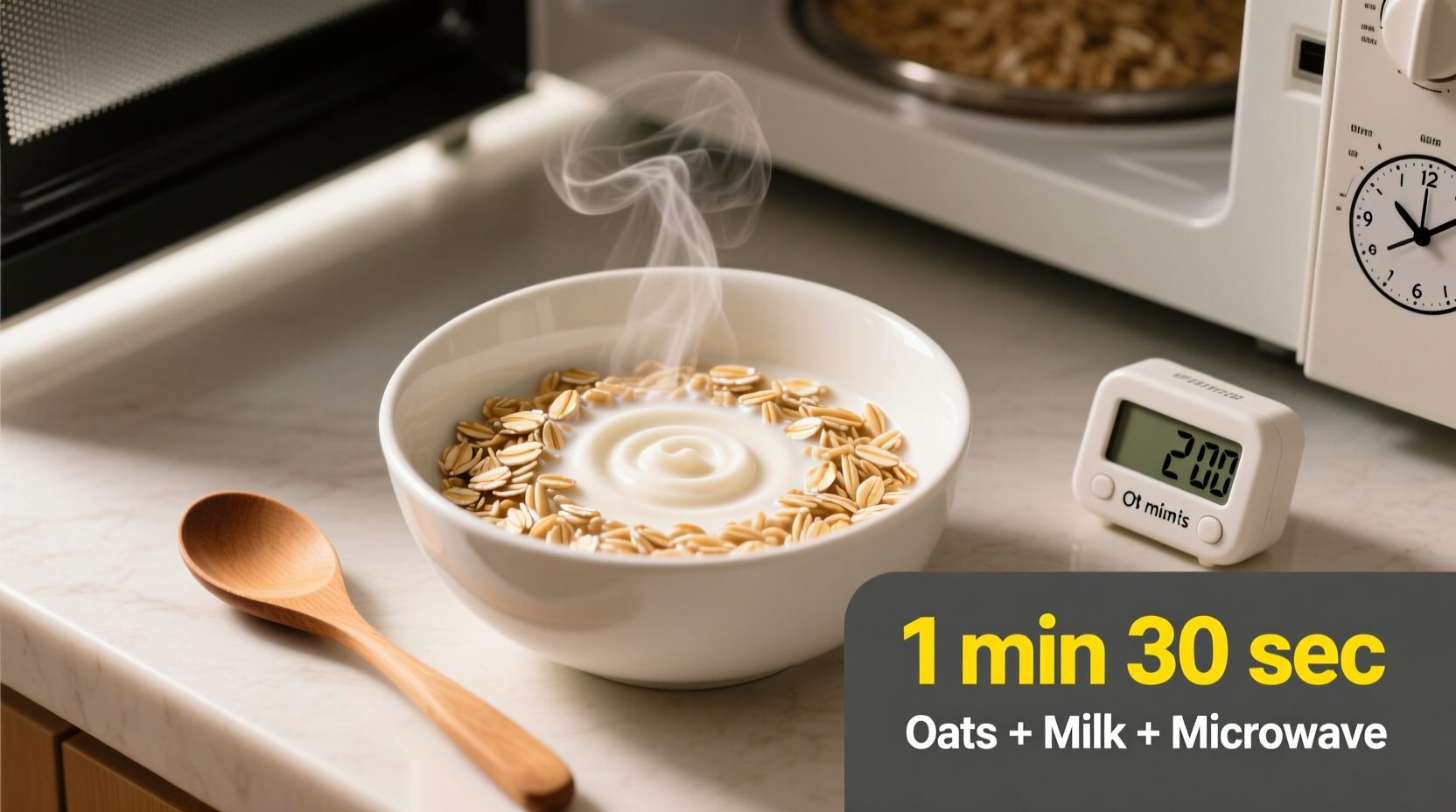The fastest way to cook perfect microwave oatmeal is using a 2:1 liquid-to-oats ratio (1 cup liquid to 1/2 cup rolled oats), microwaved for 2-3 minutes on high, then stirred and rested for 1 minute. This foolproof method prevents boil-overs while delivering creamy, non-mushy results every time.
Craving a warm, comforting breakfast but short on time? You're not alone—nearly 68% of home cooks turn to the microwave for quick morning meals according to USDA Food Safety and Inspection Service data. Microwave oatmeal solves the eternal breakfast dilemma: how to get hot, satisfying oats without the stove cleanup or 15-minute wait. Forget the rubbery, overflowed messes you've probably experienced. With the right technique, you can transform basic rolled oats into a restaurant-quality bowl in under 5 minutes flat.
Why Microwave Oatmeal Beats the Stovetop (When Done Right)
Professional kitchens actually use microwave ovens for specific applications where precise heat control matters. The key advantage for oatmeal? Microwaves heat from the inside out, preventing the scorching that happens when direct stove heat meets the bottom of your pot. This creates more even gelatinization of the oats' starches—critical for that perfect creamy-but-chewy texture.
| Oat Type | Liquid Ratio | Microwave Time | Rest Time |
|---|---|---|---|
| Rolled oats | 2:1 | 2-3 minutes | 1 minute |
| Quick oats | 1.75:1 | 1.5-2 minutes | 30 seconds |
| Steel-cut oats | 3:1 | 6-8 minutes | 3 minutes |
Source: FDA Microwave Cooking Guidelines (2023)
The 4-Step Microwave Oatmeal Method That Never Fails
Step 1: Choose Your Vessel Wisely
Grab a microwave-safe bowl that's at least twice the volume of your finished oatmeal. Ceramic works best—its thermal mass prevents sudden temperature spikes that cause boil-overs. Never use metal containers or dishes with metallic trim. For single servings, a 20-ounce coffee mug gives perfect results with minimal cleanup.
Step 2: Master the Ratio (This Is Non-Negotiable)
For creamy but textured rolled oats: 1/2 cup oats + 1 cup liquid. Use water for neutral flavor, or 3/4 cup milk + 1/4 cup water for extra creaminess without scorching. Add a pinch of salt before cooking—it's the secret professional chefs use to enhance flavor without making oats taste salty.

Step 3: Microwave With Strategic Pauses
Cook on HIGH for 90 seconds, then stir thoroughly. This breaks up surface starches that cause boil-overs. Microwave another 60-90 seconds (total 2.5-3 minutes), watching carefully during the last 30 seconds. Stop when bubbles form around the edges but haven't crested the bowl. Remember: oats continue cooking off-heat.
Step 4: The Critical Rest Period
Let your oatmeal sit undisturbed for 60 seconds. This allows residual heat to finish cooking the oats while the starches absorb remaining liquid. Skipping this step guarantees either watery or overcooked results. Stir once more after resting—your oats should have that ideal porridge consistency.
Avoid These 3 Microwave Oatmeal Disasters
The Overflow Incident: Caused by using too small a container or exceeding 3 minutes without stirring. Solution: Always leave 2 inches of headspace and stir midway.
The Concrete Bowl: Happens when you skip the rest period or use too little liquid. Fix: Add 1-2 tablespoons of hot liquid and stir vigorously.
The Soggy Center: Results from uneven microwave distribution. Prevent: Stir thoroughly at the 90-second mark to redistribute heat.
Pro Customization Techniques (Beyond Basic Sweeteners)
Savory Upgrade: After cooking, stir in 1/4 cup grated Parmesan, 1 teaspoon miso paste, and black pepper. Top with a soft-boiled egg.
Protein Boost: Mix 1/4 cup Greek yogurt into finished oats instead of milk—adds creaminess plus 10g protein.
Flavor Infusion: Steep cinnamon sticks or vanilla beans in your liquid for 5 minutes before adding oats. Remove before microwaving.
When Microwave Oatmeal Isn't Ideal
Microwave cooking works best for single servings of rolled or quick oats. For steel-cut oats or large batches (4+ servings), stovetop remains superior due to more consistent heat distribution. As noted in the FDA's Microwave Cooking Guidelines, "microwave energy penetration decreases with volume, making uniform heating challenging for quantities over 2 cups."
Storage and Reheating Like a Pro
Cool cooked oatmeal completely before storing in airtight containers. Refrigerate for up to 5 days or freeze in portion-sized containers for 2 months. To reheat: Add 2 tablespoons liquid per cup of oats, microwave at 50% power for 90 seconds, then stir and finish at full power for 30 seconds. This prevents the dreaded rubbery texture of over-reheated oats.
Nutrition Considerations for Health-Conscious Eaters
According to USDA FoodData Central, 1/2 cup dry rolled oats contains 150 calories, 5g protein, and 4g fiber. Adding milk instead of water increases protein by 30% but adds 60 calories. For blood sugar management, registered dietitians recommend pairing oats with 5-10g of protein or healthy fat to slow glucose absorption—try stirring in almond butter after cooking rather than adding sugar.











 浙公网安备
33010002000092号
浙公网安备
33010002000092号 浙B2-20120091-4
浙B2-20120091-4